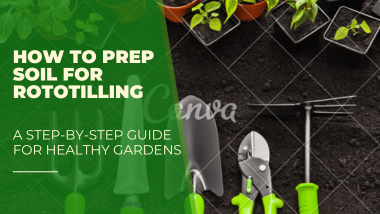Let’s be honest, we all know that gardening can be a bit of a challenge. The pests, the weather, and even our own forgetfulness when it comes to watering – they all seem to conspire against us! But hey, don’t let these garden mishaps deter you. I’m here with good news!
Now before you start fretting about adding another complex tool to your gardening arsenal, hold tight – using a garden cloche is as simple as pie! And no worries if pie-making isn’t exactly second nature either (let’s save that tutorial for another day), because we’re about to delve into all things ‘cloche.’
So buckle up green thumbs and aspiring botanists alike – get ready to demystify the art of using a garden cloche effectively. You’ll discover tips on placement, maintaining moisture levels and so much more along this journey towards plant paradise. Consider this adventure begun – welcome aboard!
Choosing the Right Garden Cloche
When it comes to choosing a garden cloche, there are several factors to consider.
Firstly, you need to decide on the type of cloche that suits your needs. There are different types available, such as bell-shaped, tunnel-shaped, or Victorian-style cloches. Each type has its own advantages and disadvantages.
For beginners, a bell-shaped garden cloche is often recommended. It is simple to set up and provides good protection for plants. On the other hand, tunnel-shaped cloches are great if you have a larger space to cover or want to create an entire row of protected plants.
Lastly, Victorian-style cloches add a touch of elegance and can be used as decorative elements in your garden.
Site Selection for Setting up a Garden Cloche
Before setting up your garden cloche, it’s important to choose the right location in your garden. The site should receive ample sunlight throughout the day but should also be sheltered from strong winds that could potentially damage or topple over the structure.
Ideally, select an area with well-drained soil where water won’t accumulate around the base of the cloche after rainstorms. Additionally, consider nearby plants – make sure they won’t be overshadowed by taller plants once inside the cloche.
Proper Installation of Garden Cloches
Setting up a garden cloche requires some basic steps for proper installation:
1) First and foremost, clear any weeds or debris from around the chosen site.
2) Place your chosen size and type of “garden”>garden cloak”}in position; ensure it rests securely on level ground.
3) If provided with pegs or anchor hooks use them secure one side at each corner making sure not t pull too tightly as the structure needs space to breathe.
4) Once you are happy with its position, it’s time to prepare the soil inside. Gently loosen and moisten the soil before planting.
5) Lastly, ensure that any plants or seeds you plan to place under the cloche are watered prior to their placement.
Maintaining Optimal Environment Inside the Cloche
To get the best results from your garden cloche, it’s important to maintain an optimal environment for plant growth. Here are a few tips:
1) Temperature Control
During hot summer days, ventilation is key as excessive heat can damage plants. Open up one or both ends of tunnel-type cloches or lift one side of bell-shaped cloches during peak temperatures.
Conversely, during colder months, it may be necessary to close up all openings and insulate the interior using blankets or straw.
2) Humidity Regulation
Moisture levels within a garden cloak should be monitored carefully; too much humidity can promote fungal diseases while low humidity could result in drying out plants. Regularly check moisture levels by touching leaves and feeling soil – adjust watering accordingly.
3) Pest Management
Inspect your garden cloak regularly for signs of pests such as aphids, slugs, or snails. Remove any insects found on plants manually and consider organic pest control methods if necessary.
Watering and Ventilation Tips
Proper watering is essential when using a garden cloche:
1) Watering frequency: The enclosed environment created by a garden cloak may require less frequent watering than open-air gardening due to reduced evaporation. Monitor soil moisture levels regularly and water only when necessary.
2 ) Avoid overwatering: Overwatering can lead to root rot in plants confined within a closed environment like a garden cloak; make sure not to let water accumulate excessively.
Ventilation plays an important role in preventing overheating or moisture build-up inside the cloche. Open up one or both ends of tunnel-type cloches or lift one side of bell-shaped cloches during hot weather, and close them when temperatures drop.
How to Use a Garden Cloche for Seed Germination
Garden cloches are excellent tools for seed germination as they create a warm and protected environment. Here’s how you can use a garden cloak specifically for seed germination:
1) Prepare the soil: Ensure that the soil inside your garden cloak is well-drained and has been properly prepared by loosening it with a gardening fork.
2 ) Planting seeds: Follow the specific guidelines on seed packets regarding planting depth and spacing. Gently press seeds into the soil to ensure good contact.
3) Moisture control: Keep the soil evenly moist but not waterlogged by watering gently whenever needed. Avoid overwatering, which can lead to damping-off disease in young seedlings.
4 ) Monitoring progress: Check regularly for germination progress, removing any failed seeds or weak sprouts to prevent overcrowding.
5 ) Gradual ventilation increase: Once most seeds have sprouted (usually after 10-14 days), gradually increase ventilation by opening up one end of tunnel-type cloches or lifting one side of bell-shaped ones.
6) Transplanting outside: When weather conditions allow, carefully transplant your young seedlings from under the garden cloak into their final outdoor location.
Protection against Pests, Bad Weather, and Other Elements using a Cloche
One key advantage of using garden cloves is providing protection from pests like insects, birds, rabbits, and squirrels who may harm plants. They also shield plants from bad weather such as heavy rains, windstorms, or early frosts – extending growing seasons
To maximize effectiveness in protecting against pests:
1) Monitor regularly: Regular inspection for signs of pests, such as chewed leaves or droppings. Promptly remove any found to prevent infestation.
2) Secure the base: Ensure that the cloche is securely anchored into the ground using pegs or anchor hooks to prevent animals from digging underneath.
3) Create a barrier: Consider placing mesh netting over open areas of tunnel-type cloches or fine plastic mesh screens on bell-shaped ones to provide an additional layer of protection against insects and birds.
Garden Cloches in Organic Gardening: Benefits and Best Practices
Using garden cloches in organic gardening provides several benefits. Here are some best practices:
1) Natural pest control: By creating a physical barrier, garden cloches help reduce reliance on chemical pesticides, making them an eco-friendly option.
2) Soil conservation: The enclosed environment created by a garden cloak also helps retain moisture within the soil, as well as preventing soil erosion caused by heavy rainfall.
3) Crop rotation strategy: Move your cloche around between planting seasons; this is especially useful in organic gardening as it disrupts pest life cycles and reduces disease risk associated with continuous planting.
4 ) Mulching advantage: Apply mulch around plants under your cloche it contributes significantly to maintaining even moisture levels
5) Sustainable material choices: Opt for sustainable materials when purchasing new garden cloches made from recycled materials, or choose biodegradable options.
Using Different Types of Garden Cloches: Bell, Tunnel, or Victorian
There are various types of garden cloves available- each serving different purposes. Understanding their strengths will help decide which type suits your needs best
1 Bell-shaped garden cloches offer compact individual plant coverage while allowing air circulation. They work well for protecting young plants from unexpected weather changes – equally decorative.
2 Tunnel-shaped gloves allow covering larger sections protecting rows of many plants at once. They facilitate temperature and humidity control better than bell-shaped gloves.
3 Victorian-style cloches add a touch of sophistication to your garden while simultaneously protecting plants. Ideal for gardens requiring ornamental cloches with functionality.
Maximizing Growth in Plants Using Garden Cloches Through Seasons
Garden cloves provide an opportunity to extend growing seasons throughout different weather conditions. Here are some tips on maximizing plant growth using them:
1) Early planting: Use garden cloche during early spring or late fall; it will protect seedlings from cold temperatures, and frosts, and allow earlier starts.
2) Seasonal transition protection: As the seasons change, you can adjust ventilation openings accordingly inside the cloak this gives plants time to adapt gradually— ensuring their health transitions smoothly.
3) Winter gardening: Extend your growing season into winter by utilizing a garden cloak as a temporary mini-greenhouse on sunny days. This allows for the cultivation of hardy crops even when outdoor temperatures drop.
4 ) Late frost prevention: Cover tender plants susceptible to damage from late spring frosts; garden cloches protect against sudden chills, strong winds also trap natural soil heat that typically escapes at night.
Periodic Cleaning and Maintenance Tasks for Long-term Utilization
To ensure long-term utilization and optimum performance of your garden cloche:
1 ) Regular cleaning is essential; remove any dirt, moss, or algae build-up. Use mild soap or vinegar solution along with rinsing thoroughly before allowing drying completely in sunlight prior to usage.
2 ) Check the structural integrity annually and look out for any cracks or weakened areas that may have occurred over time -repair and replace if required.
3) Store adequately during off-seasons; clean properly beforehand then disassemble parts and store either indoors or housed in plastic storage bins. Remember to keep away from moisture-harsh elements which could lead to deterioration.
Remember, proper maintenance ensures that your garden cloche remains durable and functional safeguarding your plants year after year.
In Conclusion
Using a garden cloche can significantly enhance and protect your plants’ growth.
By choosing the right type of cloche, selecting an appropriate site, installing it correctly, maintaining optimal conditions inside the cloak, and utilizing various techniques for seed germination or pest protection – you can create a thriving garden throughout different seasons.


